Indigo Shader Language Reference
The Indigo Shader Language (ISL) allows users of Indigo to write programs (known as shaders) that can control many aspects of Indigo, such as all material parameters. (colour, roughness, displacement etc..)
ISL is based on Winter, a high performance functional programming language.
See https://github.com/glaretechnologies/winter for Winter documentation.
Built-in functions – Debugging functions
print(int x) int
print(bool x) bool
print(vec2 x) vec2
print(vec3 x) vec3
print(mat2x2 x) mat2x2
print(mat3x3 x) mat3x3
Prints the value of x to standard output, then returns it.
If there are multiple calls to print in a shader, the function calls are not guaranteed to execute in any particular order.
To view the standard output from Indigo, you will need to run the console version of Indigo - indigo_console. (indigo_console.exe on Windows etc..)
Built-in functions – Maths utility functions
Returns pi.
mod(int x, int y) int
Returns the remainder of x / y.
Returns sin(x).
Returns sin^-1(x).
Returns cos(x).
Returns cos^-1(x).
Returns tan(x).
Returns tan^-1(x).
Returns tan^-1(y/x), mapped into the range [-pi, pi]
Returns the absolute value of x.
Returns e^x.
Returns x^y.
Returns x^1/2.
Returns the natural logarithm of x, ln(x).
Returns the largest integer y, such that x >= y.
Returns the smallest integer y, such that x <= y.
Returns x – floor(x).
Returns floor(x) converted to an integer.
Returns ceil(x) converted to an integer.
Converts x to type real.
min(real x, real y) real
min(vec2 x, vec2 y) vec2
min(vec3 x, vec3 y) vec3
If x < y, returns x, otherwise returns y.
In the case of vec2 or vec3 arguments, the comparison is done component-wise.
max(real x, real y) real
max(vec2 x, vec2 y) vec2
max(vec3 x, vec3 y) vec3
If x > y, returns x, otherwise returns y.
In the case of vec2 or vec3 arguments, the comparision is done component-wise.
lerp(vec2 x, vec2 y, real t) vec2
lerp(vec3 x, vec3 y, real t) vec3
Returns x * (1 – t) + y * t
clamp(real x, real minval, real maxval) real
clamp(vec2 x, vec2 minval, vec2 maxval) vec2.
clamp(vec3 x, vec3 minval, vec3 maxval) vec3
Returns max(minval, min(maxval, x)).
In the case of vec2 or vec3 arguments, the clamping is done component-wise.
Undefined if minval > maxval.
Returns 1 if x >= step_x, 0 otherwise.
Returns 0 if x <= a, 1 if x >= b, and interpolates smoothly between 0 and 1 as x ranges from a to b.
Like smoothstep but smoother.
0 if x < a or x > b, 1 otherwise.
0 when x < a, smoothly interpolates up to 1 when x is between a and b, 1 between b and c, smoothly interpolates down to 0 when x is between c and d. 0 when x > d.
Built-in functions – Matrix functions
Matrix constructors
Returns the 2 x 2 matrix
e11 e12
e21 e22
Returns the 3 x 3 matrix
e11 e12 e13
e21 e22 e23
e31 e32 e33
Matrix operations
Returns the 2 x 2 matrix AB.
Returns the 3 x 3 matrix AB.
Returns the 2-vector (2 x 1 matrix) Ab.
Returns the 3-vector (3 x 1 matrix) Ab.
transpose(mat3x3 A) mat3x3
Returns the transpose of A.
inverse(mat3x3 A) mat3x3
Returns the inverse of A. Undefined if A is not invertible.
Built-in functions – Miscellaneous functions
Returns the shading normal for the current surface point in world space.
Returns the current surface point in object space coordinates.
Returns the minimum of the cosines of the zenith angles of the incident and exitant vectors of a ray scattering off a surface.
Returns the maximum of the cosines of the zenith angles of the incident and exitant vectors of a ray scattering off a surface.
Returns the intrinsic coordinates for the intersected triangle.
Returns a unique integer identifier for the currently hit object.
Return the mean curvature at the current point.
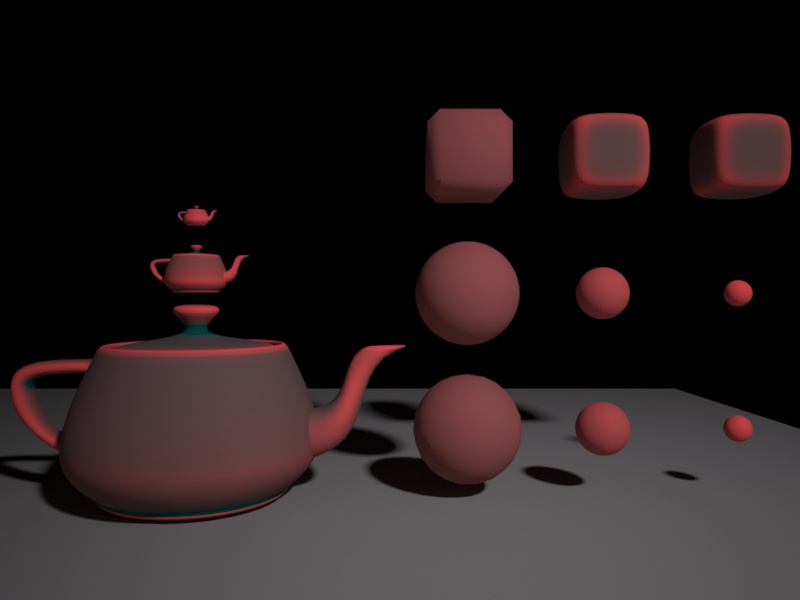
Curvature shader controlling the material colour. Red = negative mean curvature, green/blue = positive mean curvature.
Built-in functions – Procedural noise functions
Basic noise
The basic noise function is Perlin noise, which is a pseudo-random noise function.
This is an example of Perlin noise used as a displacement value: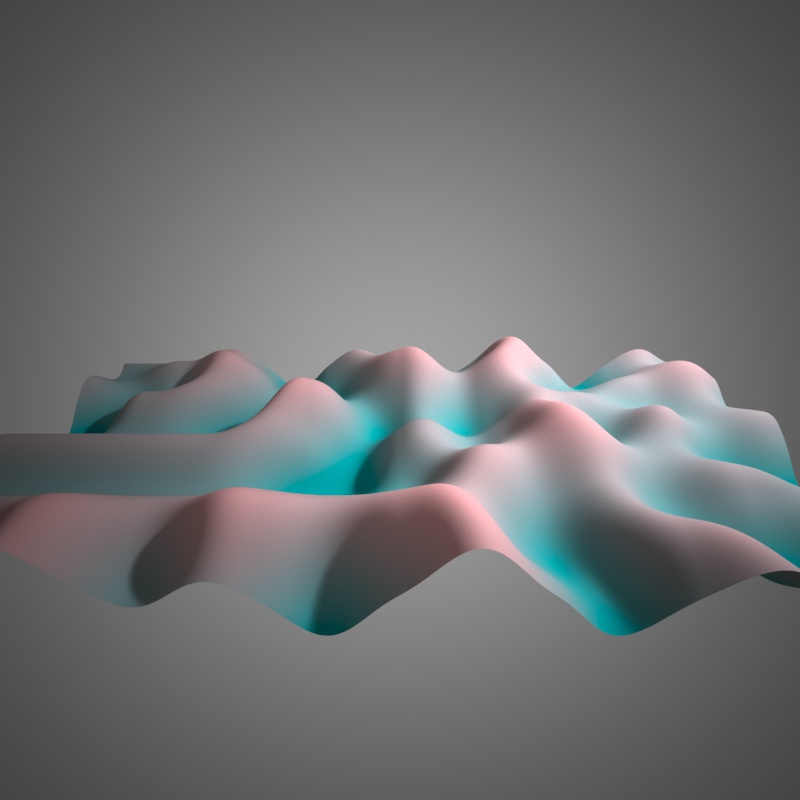
Returns single-valued (scalar) Perlin noise evaluated at x. Values returned lie in the range from -1 to 1.
Returns single-valued Perlin noise evaluated at x.
Returns single-valued Perlin noise evaluated at x.
Returns 3-valued noise (each component is a decorrelated noise value) evaluated at 2d-coordinates.
Returns 3-valued noise (each component is a decorrelated noise value) evaluated at 3d-coordinates.
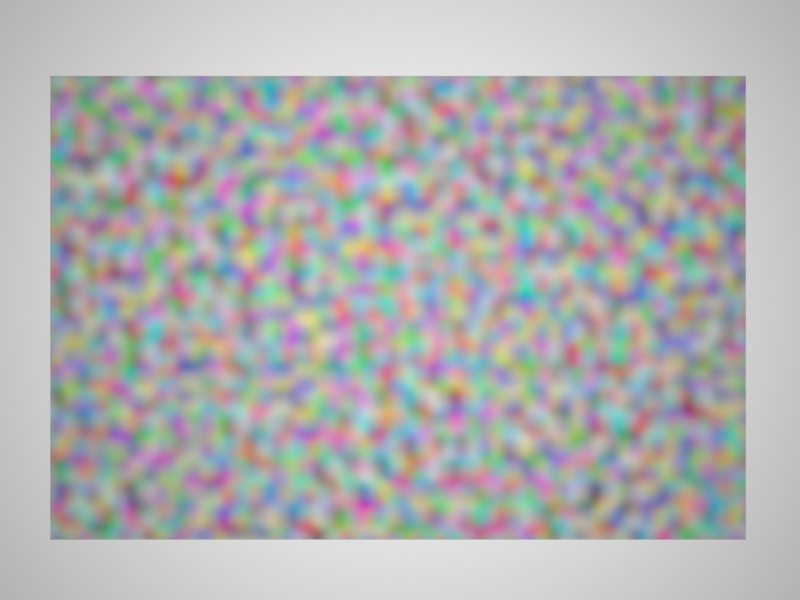
An example of 3-valued noise.
Returns 4-valued noise (each component is a decorrelated noise value) evaluated at 2d-coordinates.
Returns 4-valued noise (each component is a decorrelated noise value) evaluated at 3d-coordinates.
Basic Fractional Brownian Motion noise
This type of noise is made by adding together a number of different frequences of Perlin noise together.
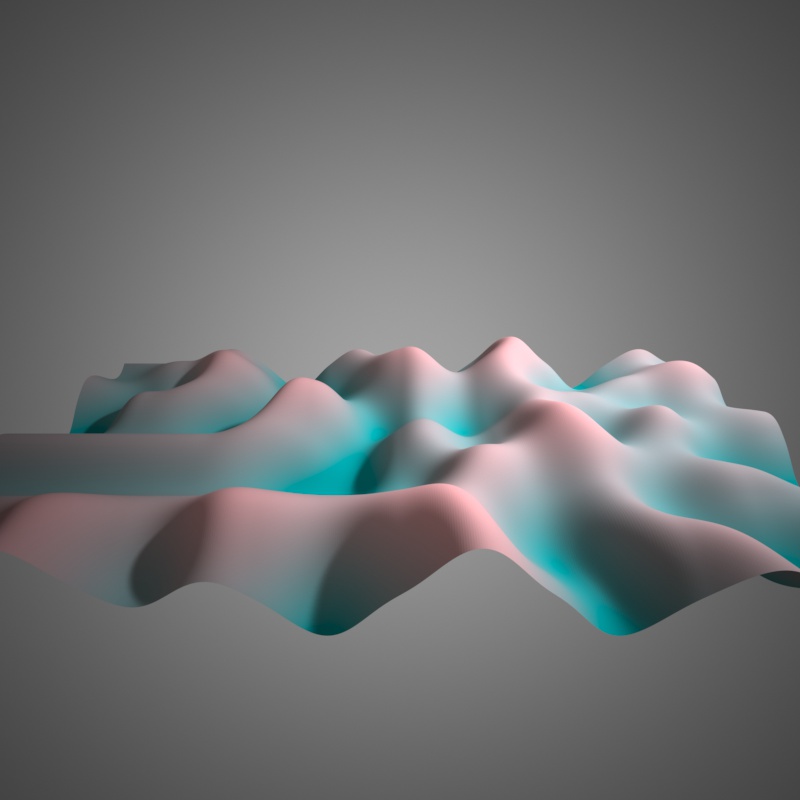
FBM, 1 Octave of noise.
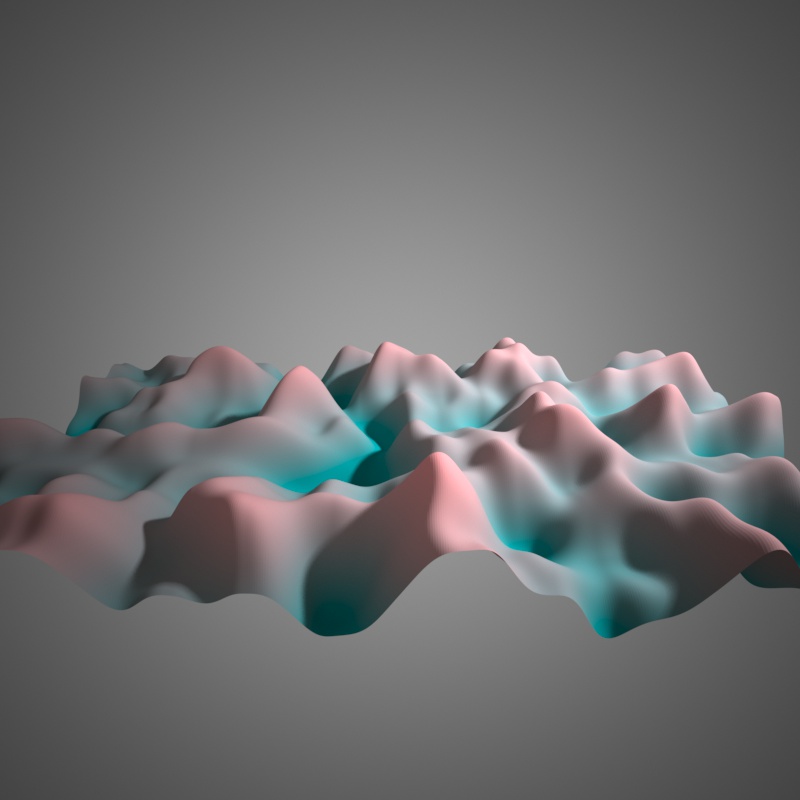
FBM, 2 Octaves of noise.
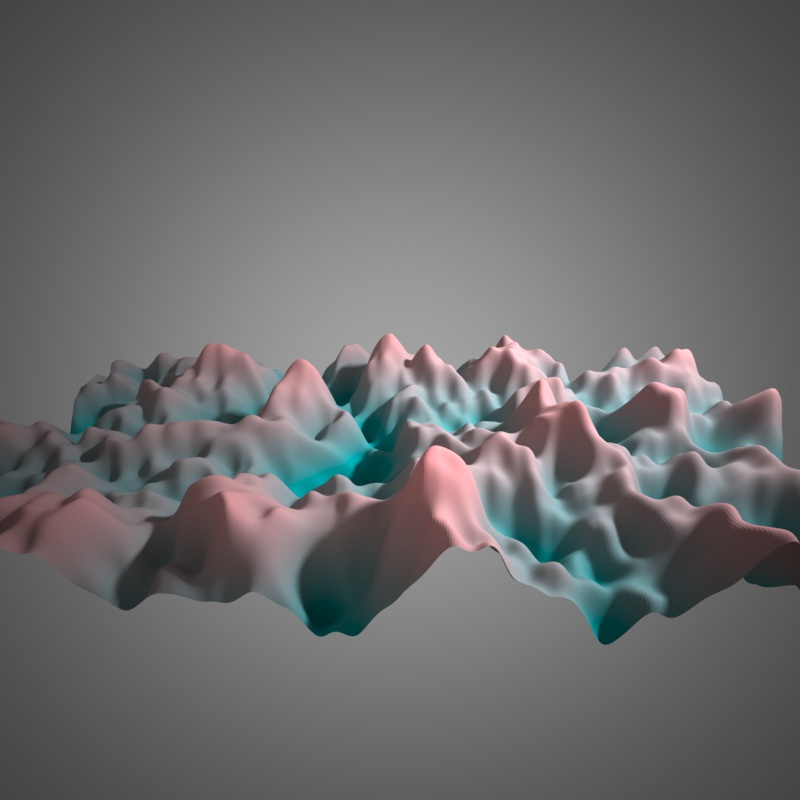
FBM, 3 Octaves of noise.
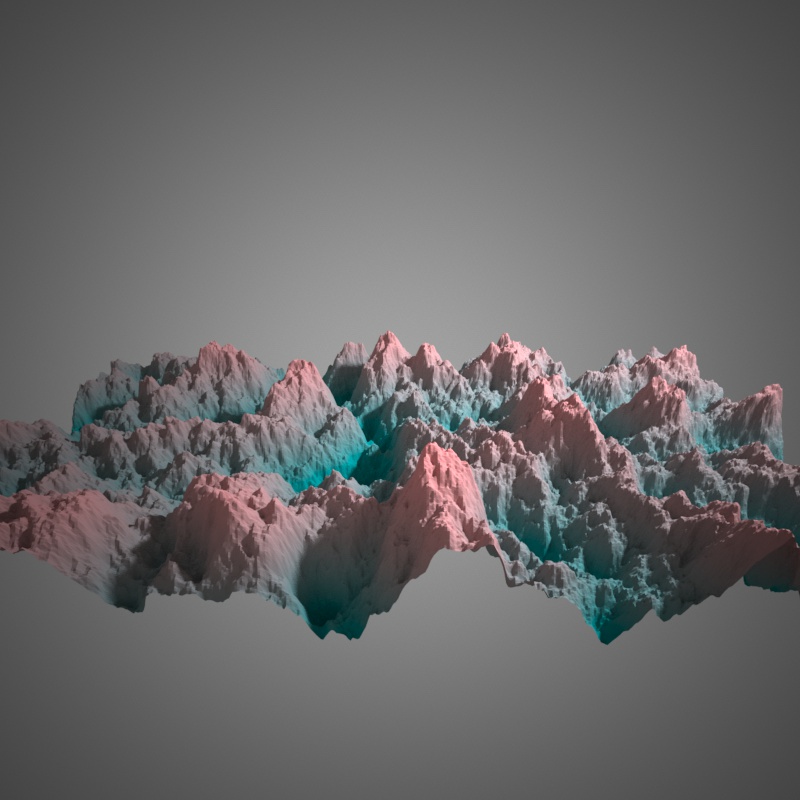
FBM, 10 Octaves of noise.
Returns oc octaves of 1-D Fractional Brownian Motion noise evaluated at x.
Returns oc octaves of 2-D Fractional Brownian Motion noise evaluated at x.
Returns oc octaves of 3-D Fractional Brownian Motion noise evaluated at x.
Grid noise
gridNoise(vec2 x) real
gridNoise(vec3 x) real
Takes the floor of the coordinates passed in, and then returns a quasi-random value between 0 and 1 for those integer coordinates.
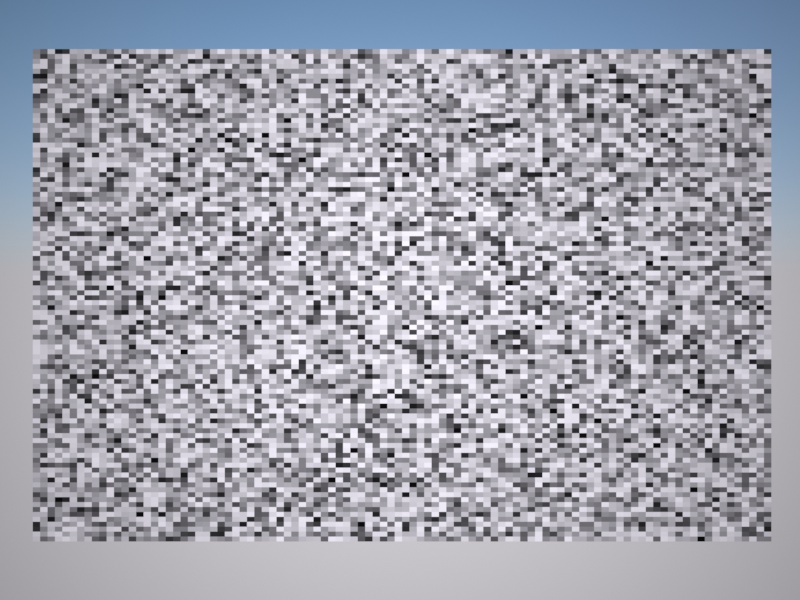
Grid noise.
Voronoi noise
Returns the coordinates of the nearest Voronoi site.
The irregularity argument controls the 'randomness' of the site positions. It should lie in the range [0, 1].
Irregularity of zero corresponds to a regular grid of site positions.
Irregularity of one corresponds to the maximum 'randomness' of cell positions within the grid, so that the grid is not visible.

A shader based on Voronoi noise. The white value of the shader is based on the distance in UV space from the shaded point to the nearest Voronoi site. Irregularity = 0.2.

A shader based on Voronoi noise. The white value of the shader is based on the distance in UV space from the shaded point to the nearest Voronoi site. Irregularity = 0.8.
Similar to above, but takes a 3d vector and returns the nearest Voronoi site in 3d.
Advanced Fractional Brownian Motion Noise
This fbm function is a more general fbm that takes more parameters.
basis_type selects from a number of basis noise functions:
0: Perlin basis
1: Ridged basis
2: Voronoi basis
x is a 3-vector at which the noise is evaluated.
H controls the fractal dimension: a larger value causes faster attenuation of higher frequencies.
A good default value is 1.
Lacunarity determines the gap in frequencies between different 'octaves' of noise.
A larger lacunarity means each subsequence octave will have higher frequency.
A good default value is 2.
Octaves determines the number of octaves of noise that are added together. If the value has a fractional component, the last octave is attenuated by the fractional part then added.
Basis Types
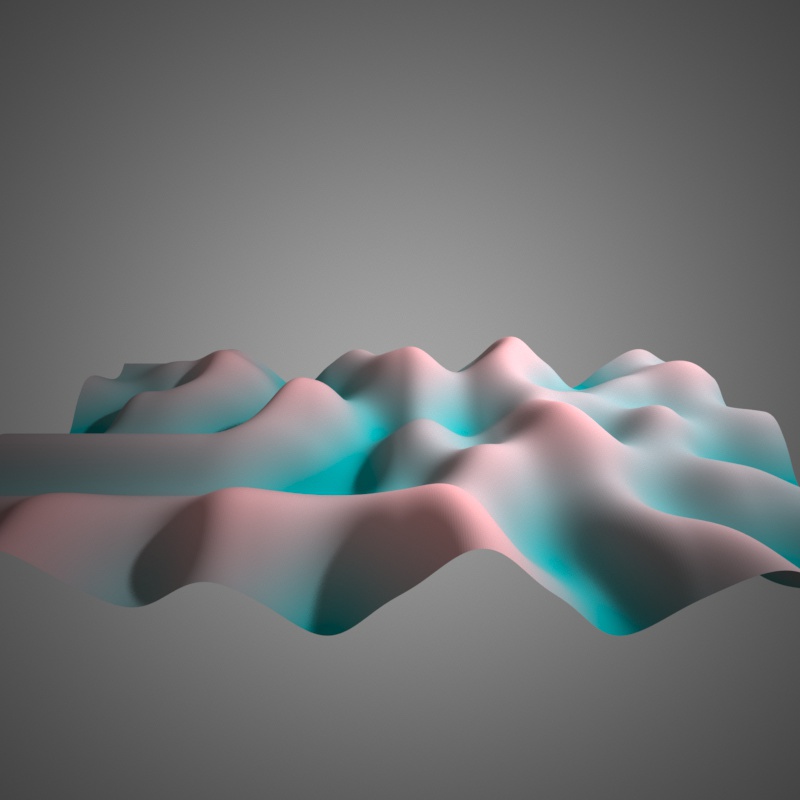
Perlin basis, 1 octave
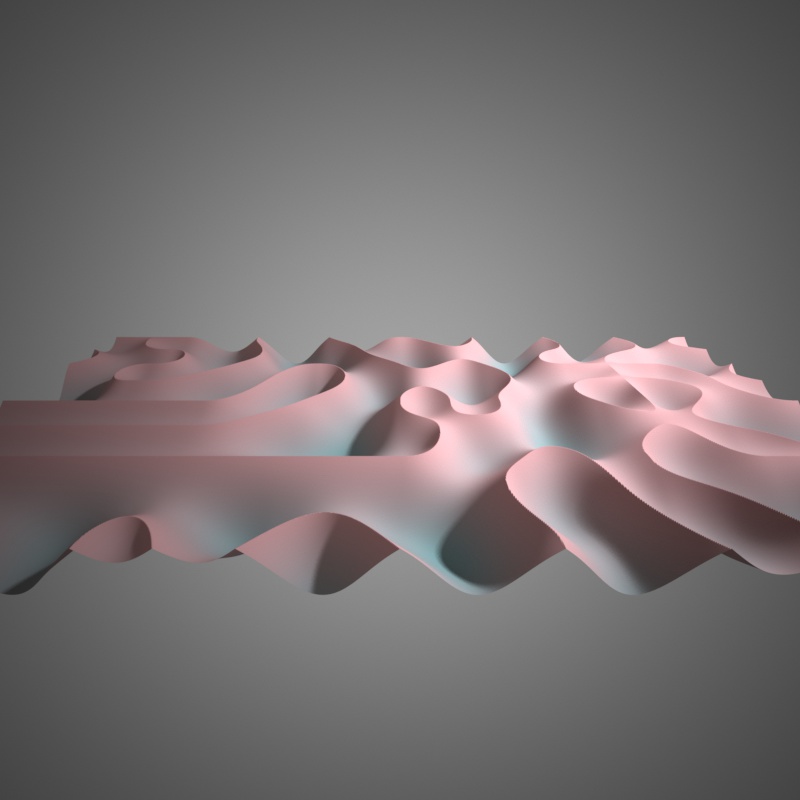
Ridged basis, 1 octave
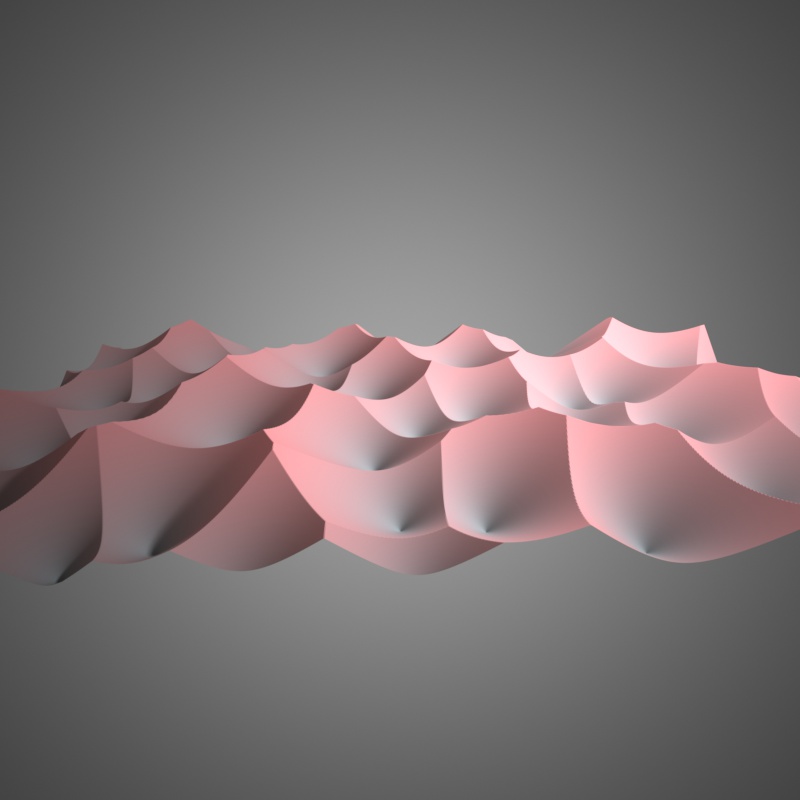
Voronoi basis, 1 octave
Effect of number of octaves

Perlin basis, 1 octave

Perlin basis, 2 octaves

Perlin basis, 3 octaves

Perlin basis, 10 octaves

Ridged basis, 1 octave
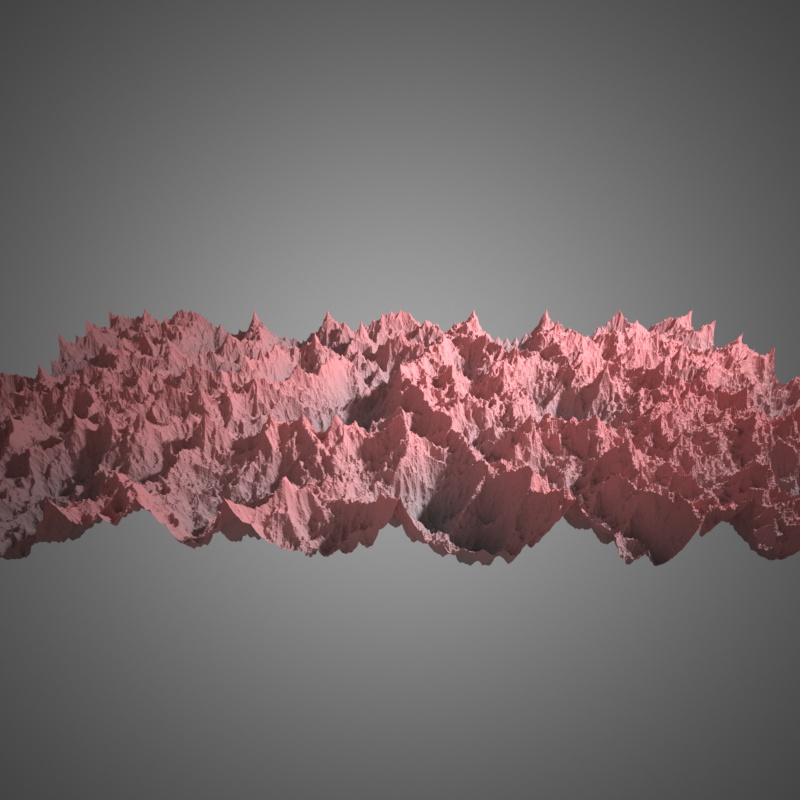
Ridged basis, 10 octaves

Voronoi basis, 1 octave
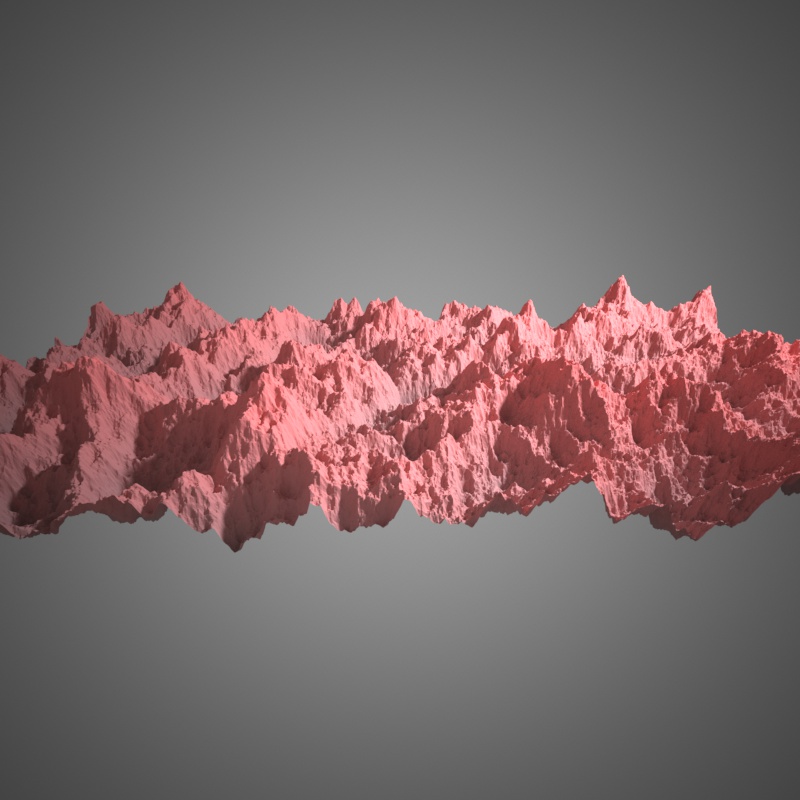
Voronoi basis, 10 octaves
Effect of fractal dimension (H)
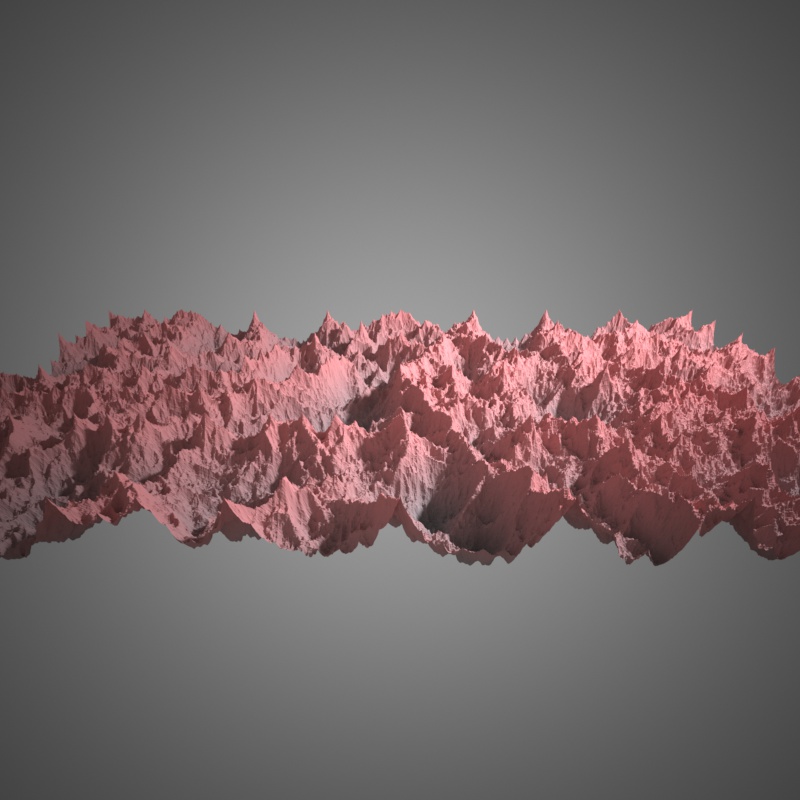
Ridged basis, H=1
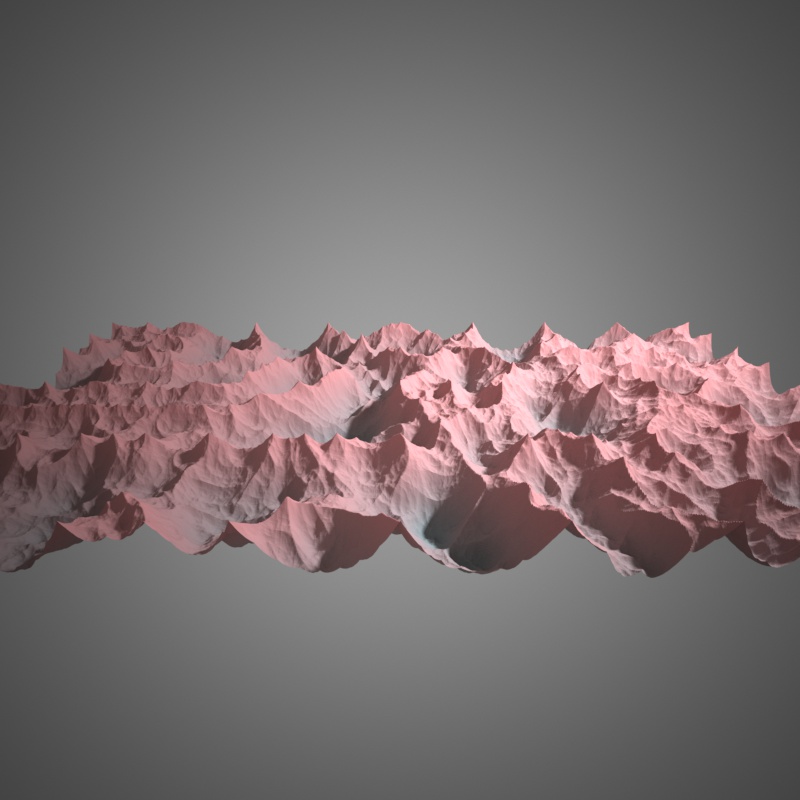
Ridged basis, H=1.5
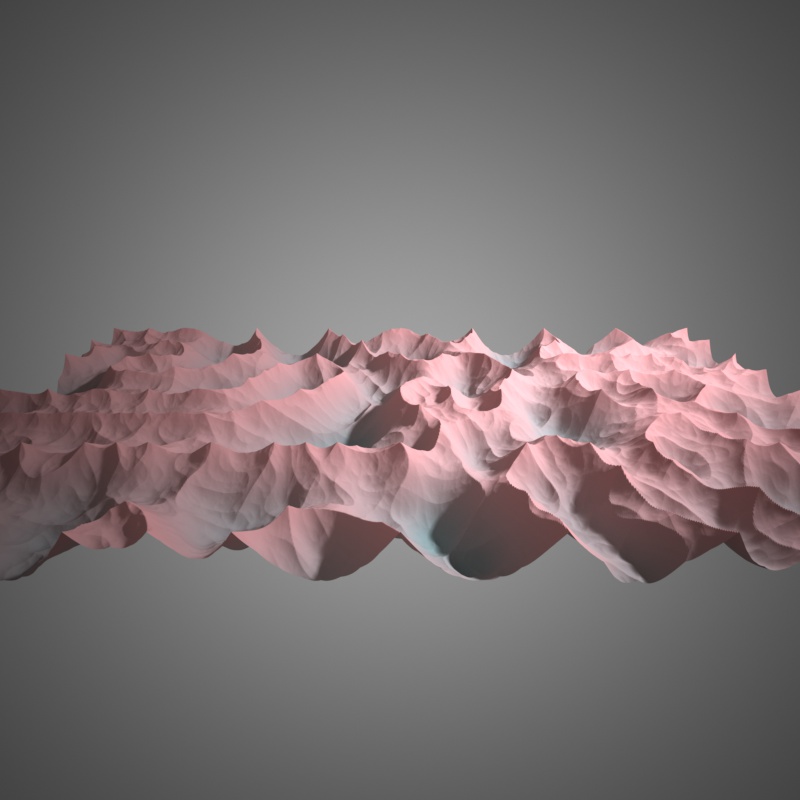
Ridged basis, H=2
Effect of Lacunarity
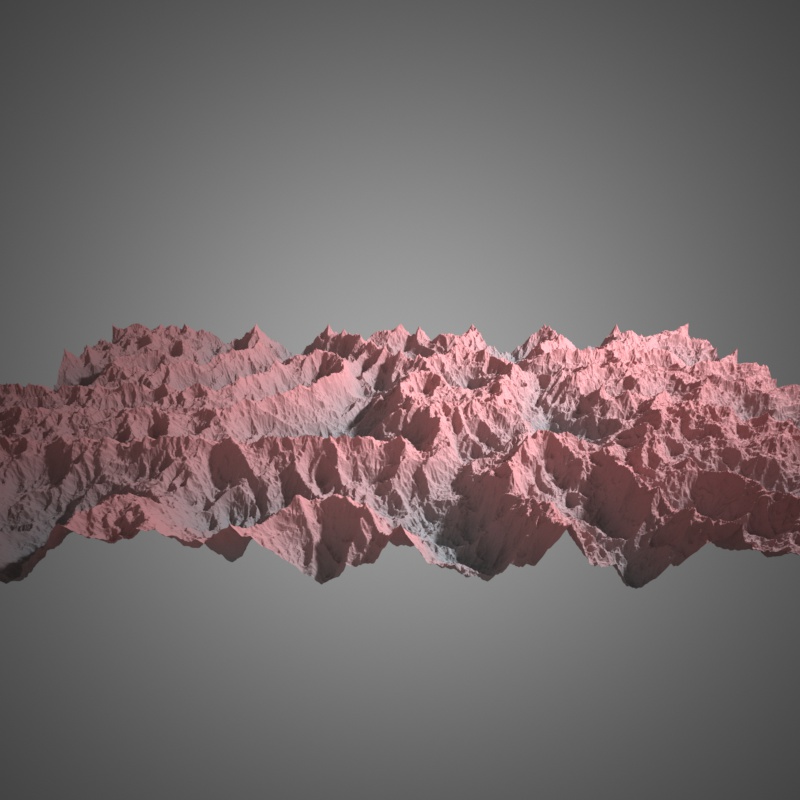
Ridged basis, lacunarity = 3
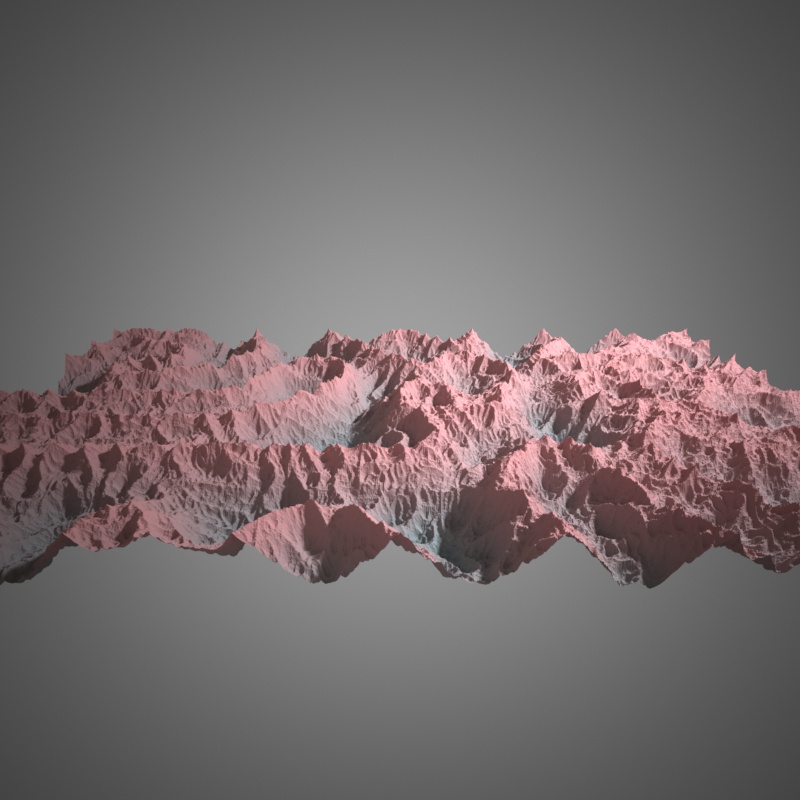
Ridged basis, lacunarity = 4
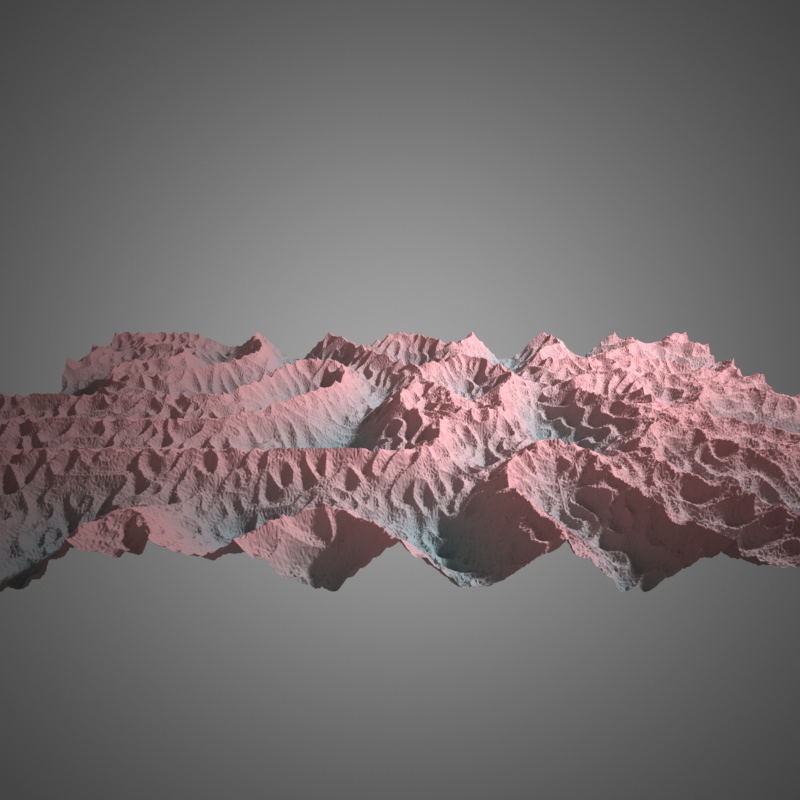
Ridged basis, lacunarity = 6
You can download the example Indigo scene used in the images above here.
Built-in functions – Texture sampling functions
Gets the i-th texture coordinates at the shading point, where i = texcoord_set_index.
Samples the i-th texture defined in the current material, where i = texture_index is a 0-based index, at the normalised coordinates (s, t). Returns a (R, G, B) triplet, where each component will be in the range [0, 1].
Built-in functions – Vector functions
Vector constructors
Returns the 2-vector (x, y).
Returns the 2-vector (x, x).
Returns the 3-vector (x, y, z).
Returns the 3-vector (x, x, x).
Vector functions
dot(vec3 a, vec3 b) real
Returns the dot product of a and b.
Returns the cross product of a and b.
length(vec3 a) real
Returns the length of a, ||a||.
Returns a / ||a||